Spring in Japan is the season for cherry blossoms and spring flowers. The weather is also very pleasant, so going out and enjoying nature should be what everyone is looking forward to, right…?
Unfortunately for people with pollen allergy, spring is the worst time of the year as it is also known as the season for hay fever in Japan. Although hay fever and pollen allergies are not deadly, they do cause a lot of trouble for people unlucky enough to suffer from them.
In this article, let’s learn about hay fever in Japan and how to survive through the pollen allergy season!
Table of Contents
- What is Kafunsho (花粉症) ?
- How many people suffer from Kafunsho in Japan?
- Kafunsho Symptoms includes…
- Hay Fever vs Flu vs Corona - How to distinguish?
- How to Prevent Kafunsho
- 10 Best Kafunsho Medicine in Japan
- Kafunsho Treatment at Hospital or Clinic
What is Kafunsho (花粉症) ?
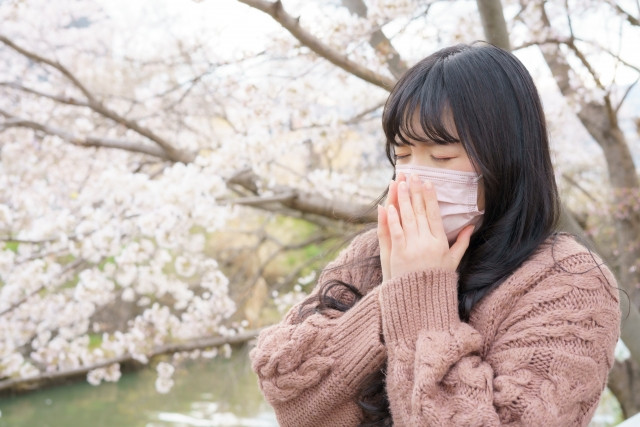
Kafunsho (花粉症) is “hay fever” in Japanese, also known as “allergic rhinitis” or “pollinosis (pollen allergy)”. Kafunsho can happen anytime throughout the year as there is always pollen in the air and different people are allergic to different types of pollen. However, Kafunsho is the most prevalent during spring in Japan, when the weather becomes warmer and many flowers are in bloom. The pollen from these flowers gets spread everywhere, and “activates” Kafunsho in many people.
スギ花粉症 (Sugi Kafunsho) is “cedar pollen allergy”, Kafunsho caused specifically by the pollen from Japanese cedar trees called 杉 (Sugi), which are the the biggest cause of Kafunsho during spring. The Sugi tree pollinates through wind during spring, so an abundance of its pollen is spread through the air. As the number of Sugi trees increases yearly, so does the amount of pollen in the air, and so does the number of people with Kafunsho.

The origin of Kafunsho from Sugi pollen can be traced back to the post World War II period. The Japanese government, as part of the reforestation policy to supply wood for the construction industry, planted a series of Sugi trees. The area of Sugi forests accounted for 18% of Japan’s land area, even bigger than the country’s agricultural land area of 11%.
As other cheaper building materials became used instead of wood for construction, the demand for wood dropped, and the Sugi trees were left to grow taller and older. The older and larger they are, the more pollen is produced.
😷 'Tis the season of Kafunsho (花粉症) - Hay Fever or Pollen Allergy in Japanese. Find out what causes hay fever in Japan,...
Posted by WeXpats on Monday, February 19, 2024
Writer's Pick
How many people suffer from Kafunsho in Japan?
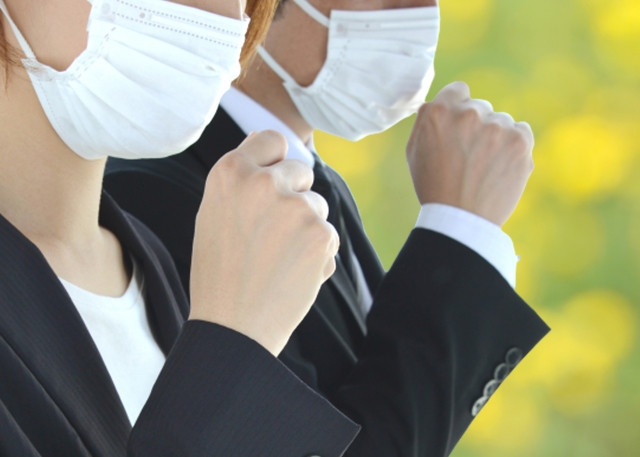
The exact number of people suffering from Kafunsho in Japan is unknown as not everyone gets a proper diagnosis, and mild symptoms can be self-treated. It is, however, a fact that the number of people suffering from Kafunsho in Japan increases every year, and that 1 in every 4 people suffer from Kafunsho.
Let’s look at some numbers.
Looking at the Japanese Ministry of the Environment’s “Hay Fever Environmental Health Manual 2022 (Revised March 2022)”, it is clear that Kafunsho is growing more and more prevalent as the years pass:
- Kafunsho prevalence rate in 1988 is 19.6% for floral pollen, 16.2% for cedar pollen, and 10.9% for other types of pollen.
- Kafunsho prevalence rate in 2008 is 29.8% for floral pollen, 26.5% for cedar pollen, and 15.4% for other types of pollen.
- Kafunsho prevalence rate in 2019 is 42.5% for floral pollen, 38.8% for cedar pollen, and 25.1% for other types of pollen.
The Manual also uncovered that Sugi Kafunsho (cedar pollen allergy) is especially prevalent in teenagers, young people and middle-aged people, or those from their 10s to 50s. These age groups are also prevalent to other types of pollen allergy apart from cedar.
※ Ministry of the Environment Japan, “花粉症環境保健マニュアル2022(令和4年3月改訂)” [PDF] [2022.03] P. 5, 6
Is it possible to develop Kafunsho after moving to Japan?
Yes, it is possible for someone who has no history of Kafunsho to develop pollen allergies later in life. Some foreign nationals who have come to reside in Japan long term may develop Kafunsho.
The longer you live in Japan, the more you become exposed to pollen. If your immune system to pollen weakens, your body will grow more sensitive to pollen, and eventually develop Kafunsho. This does not happen to everyone, and taking the right preventive measures can help avoid developing, or help slow down, getting Kafunsho.
Kafunsho Symptoms includes…
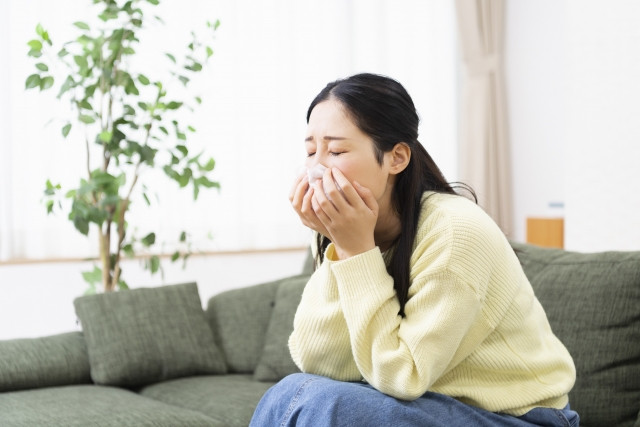
Symptoms of Kafunsho and the common cold (or flu) are very similar. Kafunsho mainly affects the nose, throat, mouth and eyes, but may also affect other areas. Below are some common Kafunsho symptoms.
- Nose: itching, runny, congested, sneezing, loss of smell
- Throat & Mouth: itching throat and/or mouth, sore throat, diminished taste buds
- Eyes: itching, tearing, swelling, redness, sensitivity to light
Some people also experience headaches, earaches and lethargy. In rare cases, atopic dermatitis may develop. People with asthma may also develop wheezing, coughing, shortness of breath, and chest tightness.
Hay Fever vs Flu vs Corona - How to distinguish?
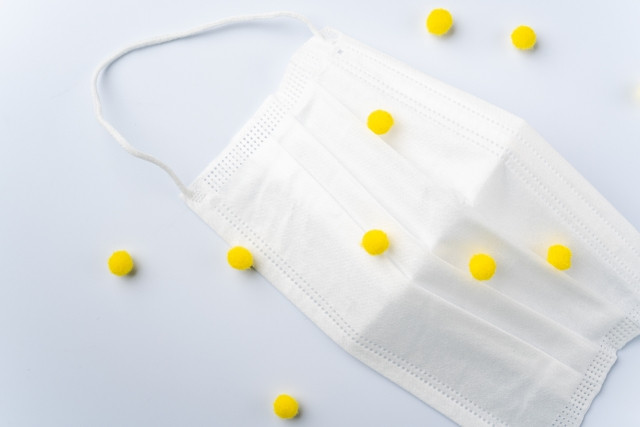
Hay Fever vs Flu
There are many shared symptoms between Kafunsho and the flu, here is how you can tell them apart.
Hay Fever
- Nasal discharge is watery and transparent
- Allergy symptoms at the eye, nose, mouth and throat area like itchiness, stinging, irritation, etc.
- Symptoms get worse at certain times of the day, namely noon and afternoon when pollen are more active.
- Symptoms last for weeks or months, or as long as allergen is present.
as compared to
Flu
- Nasal discharge is mucus-like, meaning thick, sticky and light yellow or green in colour.
- Flu symptoms like sore throat, wet coughing, chills, fever, body aches, etc.
- Tired for a whole day.
- Symptoms last a few days to 1~2 weeks depending on recovery rate.
Hay Fever vs Corona
Though Japan has entered the post-COVID phase, with things returning to pre-COVID norms, there is still a risk of spread of infections and vulnerable people should still be on their guard. Therefore, it is important to clearly distinguish between hay fever and Corona.
Symptoms of Corona are more similar to symptoms of flu (see above) than hay fever. The biggest difference between Covid and hay fever symptoms are that serious Covid symptoms include a high fever, and is usually accompanied with sore throat and dry cough.
If at doubt, visit a doctor or use a Covid self-test kit to confirm.
How to Prevent Kafunsho
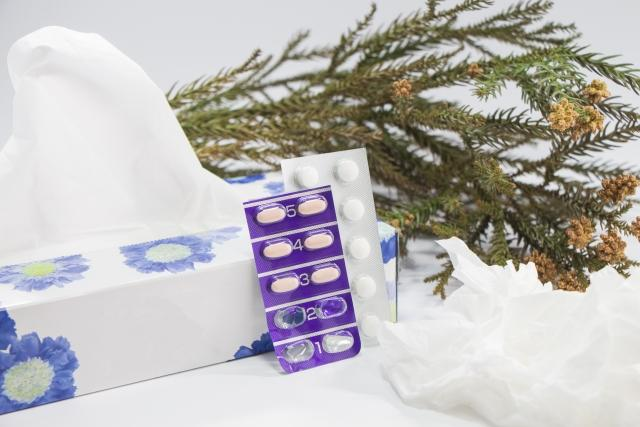
When it comes to Kafunsho, prevention is key! Once your allergies act up, it takes considerable time to recover, and you will need to suffer through it.
Refer to our prevention suggestions below and come up with a suitable solution for yourself!
Take Preventive Medicine Before the Kafunsho Season
An effective method to prevent Kafunsho is to take anti-allergy medications before the onset of the pollen season. Anti-allergy medications are effective in strengthening the body’s resistance against allergens. Around January and early February, you will see ENT (ear, nose, throat) clinics becoming busy. These are people visiting to get their “anti-Kafunsho” medication.
Check Pollen Forecast Before Going Out
In spring, Japanese news and weather forecasts will announce “Pollen Emission Forecast (花粉発散予報 Kafun Hassan Yohou)” daily. It is highly recommended you check the forecast daily to take preventative measures before going out (below), or choose to not go out at all if the pollen forecast is particularly high.
Pay special attention to weather conditions that usually bring higher pollen count, for example:
- 乾燥 (Kansou) : dry
- 晴れ (Hare) : clear, sunny, good weather
- 気温が高い (Kion ga Takai) : high temperature
- 強風 (Kyoufuu)、風が強い (Kaze ga Tsuyoi) : strong wind
And also, the next day after it has rained, and consecutive days when the temperature is high.
※ Ministry of the Environment Japan, “花粉症環境保健マニュアル2022(令和4年3月改訂)” [PDF] [2022.03] P. 22
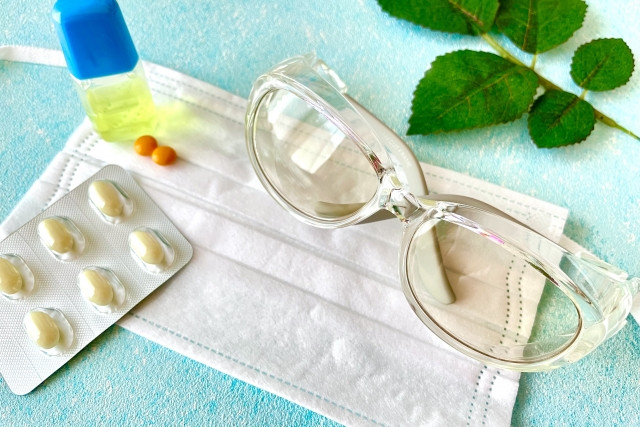
Preventive Measures When Going Out
The simplest and highly effective method is to wear a mask. Regular masks can filter up to 70% of pollen in the air, while specialised pollen prevention masks can filter up to 84% of pollen in the air. Even before the COVID-19 pandemic, Japanese people had a custom of wearing masks to prevent Kafunsho and to prevent spread of viral infections, such as the flu.
Another effective Kafunsho prevention item is glasses. Regular eyewear can block up to 40% of pollen from coming into contact with your eyes, while specialised pollen protective eyewear can block up to 65%. This helps prevent eye irritation and itching from pollen.
Additionally, wearing a hat to prevent pollen from gathering on your head is also helpful. Avoid wearing wool or knitted wear that pollen can stick to easily out, instead opt for simple cotton or synthetic fibre clothing.
※ Ministry of the Environment Japan, “花粉症環境保健マニュアル2022(令和4年3月改訂)” [PDF] [2022.03] P. 24~26
Preventive Measures at Home
Here are some preventive measures you can practise at home to “pollen-proof” your living space:
- Avoid bringing clothes worn outdoors into the bedroom or living room, they should go straight to the laundry room.
- Avoid hang-drying laundry outside the house, also prevents pollen staining on clothes.
- Wash your face, hands, and rinse your mouth when returning home.
- Take a shower after going out to prevent the spread of pollen around your house.
- Avoid fully opening windows for ventilation during Kafunsho season, open windows to maximum 10 cm wide and close curtains. Wash the curtains regularly.
-
Use an air purifier to filter particles and pollen in the air.
10 Best Kafunsho Medicine in Japan
Despite your best efforts, it may not always be possible to fully prevent Kafunsho. In which case, here are some highly ranked Japanese hay fever medicines you can find over-the-counter at pharmacies in Japan, or online.
1. アレジオン20 (Arejion 20)

Available to buy on Amazon.
Alesion 20 prevents the onset and relieves allergic symptoms caused by house dust or pollen with anti-allergy, anti-inflammatory and antihistamine effects. A single pill is made to last a whole with no sleepy or drowsy effect. Best taken the night before for whole day protection and relief from the next morning.
※ This medicine is for ages 15 and above only.
2. アレルビ (Arerubi)
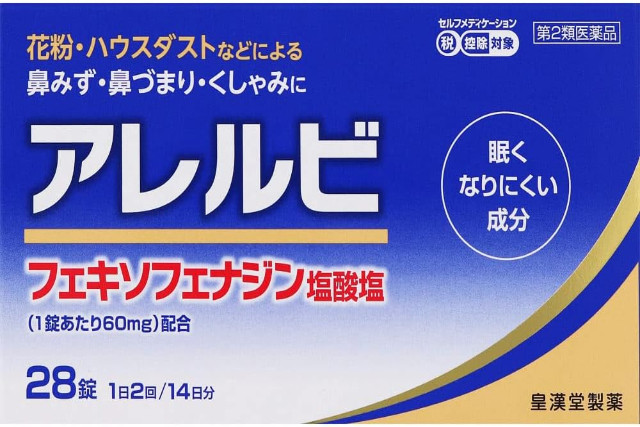
Available to buy on Amazon.
Allerby is effective for relieving allergy symptoms caused by house dust or pollen. The recommended dosage is twice a day, once in the morning and once in the evening. Tablets are coated with a film for reduced bitterness for easy consumption. This medicine does not contain ingredients that induce sleepiness.
※ This medicine is for ages 15 and above only.
3. クラリチンEX (Claritin EX)
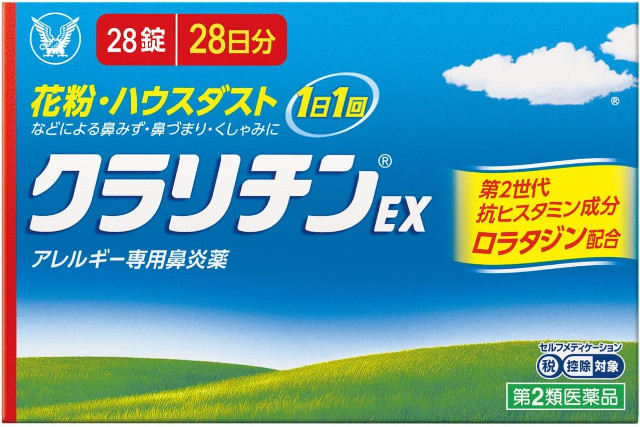
Available to buy on Amazon.
Claritin EX is effective against allergy symptoms caused by house dust or pollen with second generation antihistamine, Loratadine. Easy consumption once a day, it has no drowsy or loss of concentration side effects so you can carry on with your daily activities as normal.
※ This medicine is for ages 15 and above only.
4. アレグラFX (Aregura FX)

Available to buy on Amazon.
Allegra FX relieves allergy symptoms like runny nose, congested nose and sneezing caused by house dust and pollen. The recommended dosage is one tablet twice a day in the morning and evening. It does not contain ingredients that cause sleepiness so loss of concentration is unlikely to occur.
※ This medicine is for ages 15 and above only.
5. PHARMA CHOICE アレルギー専用点鼻スプレー ベルダサポートAG点鼻薬 (Aregugi- Senyou Tenbi Supure- Bermuda Sapo-to AG Tenbiyaku)
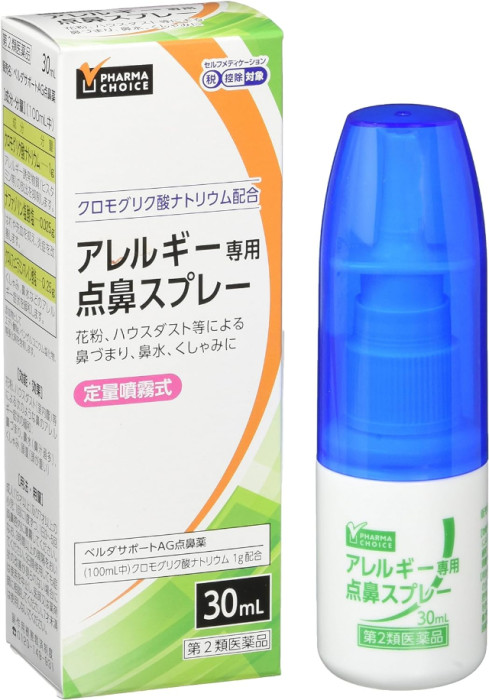
Available to buy on Amazon.
PHARMA CHOICE Allergy Nasal Spray contains sodium cromoglicate that suppresses release of chemical messengers and prevents allergic symptoms from occurring or worsening. Its antihistamine effects help relieve nasal congestion and swelling, sneezing, and runny nose. The recommended dosage is 3 to 5 times a day with intervals of 3 hours or more in between.
※ This medicine is for ages 7 and above only.
6. パブロン鼻炎アタックJL (Paburon Bien Atakku JL)

Available to buy on Amazon.
Pabron Rhinitis Attack JL seasonal allergy nasal spray contains steroids that are highly effective for relieving allergy symptoms and have little systemic effect. It has excellent anti-inflammatory and anti-allergic effects and is able to relieve severe and painful allergy symptoms. The recommended dosage is twice a day up to maximum of four times a day with intervals of at least 3 hours apart.
※ This medicine is for ages 18 and above only.
7. ナザール (Naza-ru)
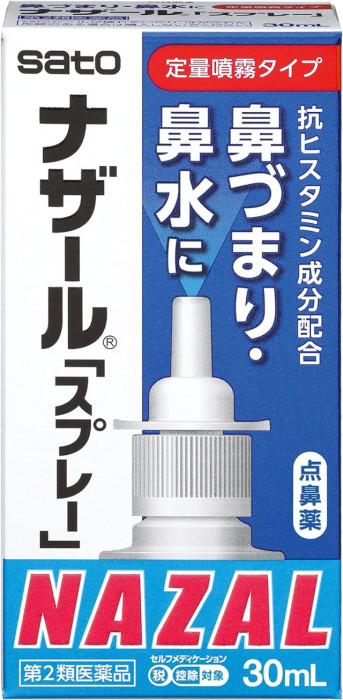
Available to buy on Amazon.
NAZAL is specifically designed to treat symptoms caused by seasonal allergies, aka Kafunsho. It can be used daily for up to three months to match the Kafunsho season. It does not induce sleepiness. The recommended dosage is twice a day but can be taken up to a maximum of four times a day.
※ This medicine is for ages 18 and above only.
8. 鼻炎薬A「クニヒロ」 (Biengusuri A “Kunihiro”)
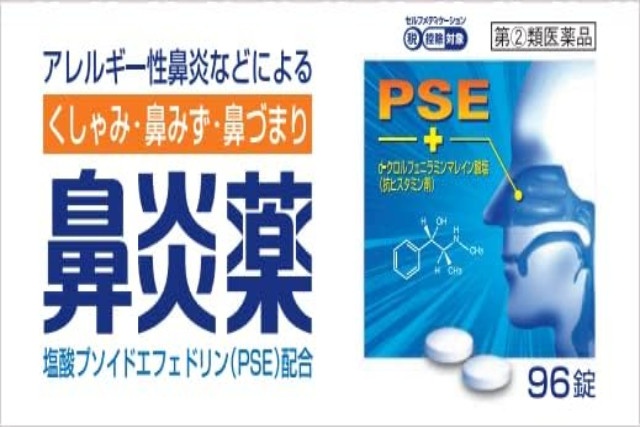
Available to buy on Amazon.
Rhinitis Medicine A “Kunihiro” is recommended for severe nasal congestion and heavy head or headache symptoms caused by house dust and pollen allergies. It contains antihistamine and anti-inflammatory effects, effectively relieving and preventing symptoms of runny stone, blocked nose, and sneezing. This medicine may cause drowsiness so driving and operating of heavy machinery should be avoided.
※ This medicine is for ages 7 and above only.
9. パブロン鼻炎カプセルSα (Paburon Bien Kapuseru Sα)
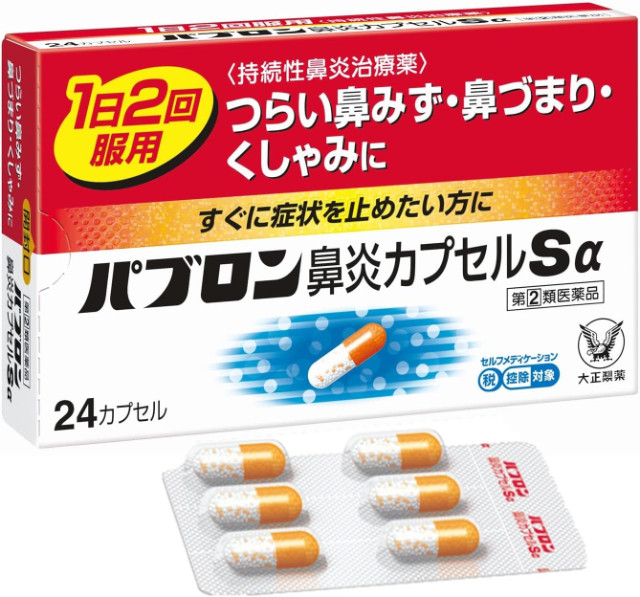
Available to buy on Amazon.
Pabron Rhinitis Capsule Sα is recommended for those who want immediate relief from Kafunsho symptoms. It is extremely effective against nasal congestions, clearing up blocked noses almost immediately and maintaining its effects. It can however cause sleepiness so avoid driving or operating heavy machinery when using.
※ This medicine is for ages 15 and above only.
10. 新・ロート小青竜湯錠 II (Shin: Ro-to Shouseiryuutou Jyou II)
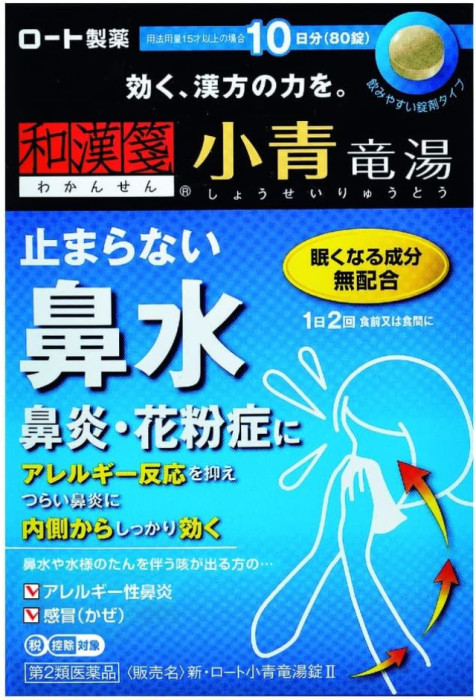
Available to buy on Amazon.
This Chinese herbal medicine raises the body’s natural defensive functions to alleviate rhinitis and hay fever symptoms. It does not contain antihistamines that make people sleepy. Since it is in tablet form, it is not difficult to consume despite being Chinese herbal medicine. Compared to other types of Japanese hay fever medicine, it can be taken by children who suffer from hay fever symptoms.
※ This medicine is for ages 5 and above only.
Kafunsho Treatment at Clinic or Hospital

You can also get treatment for Kafunsho at clinics or hospitals in Japan. Keep in mind that during the Kafunsho season, there may be a long wait. It is also possible to get Kafunsho prevention medication from clinics.
In Japan, people visit specialist clinics. Which type of specialist clinic to go to depends on your symptoms, and in the case of children, they see paediatricians. In the case of Kafunsho, the possible clinics you can visit are:
- 耳鼻咽喉科 (Jibiinkouka)・耳鼻科(Jibika) - ear, nose, throat (ENT)
- 内科 (Naika) - internal
- 小児科 (Shounika) - paediatrics
- 眼科 (Ganka) - eye
- 皮膚科 (Hifuka) - dermatology
- アレルギー科 (Arerugi-ka) - allergies
Read more about Getting Medical Care in Japan here.
To Close
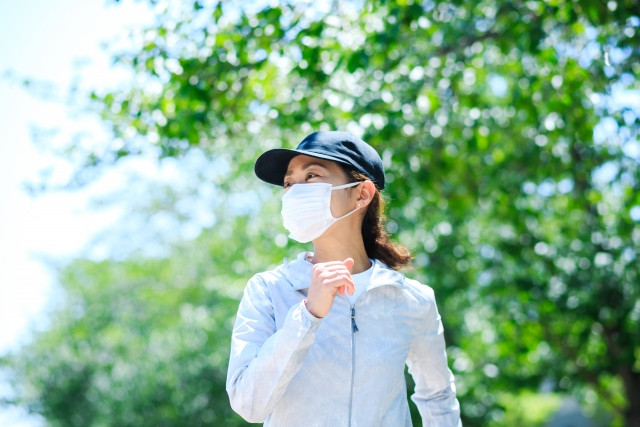
Kafunsho (花粉症) is “hay fever” in Japanese. When spring comes around, it ails many residents of Japan causing discomfort. Take the preventative steps to protect yourself from pollen to maximise your enjoyment of spring in Japan!




































